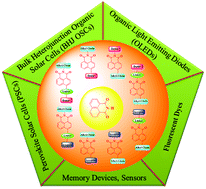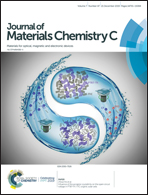Donor–acceptor substituted 1,8-naphthalimides: design, synthesis, and structure–property relationship
Abstract
Research on developing new donor–acceptor (D–A) substituted 1,8-naphthalimide (NI) based molecular systems is a rapidly growing research area, which has resulted in several technological applications including fluorescent dyes, laser dyes, brightening agents, metal sensors, pH sensors, bioimaging, organic photovoltaics (OPVs), organic light-emitting diodes (OLEDs), and many more. The functionalization of the NI unit at the N-imide site and aromatic core is easy and cost-effective, which allows one not only to produce a vast array of NI derivatives but also tune its photophysical and electronic properties. The photophysical and electrochemical properties of D–A based NIs are dependent on the substitution pattern and the nature of the donor unit, which makes them prime derivatives for application in organic photonics and electronics as well as in biological studies. In this review, we have discussed the recent developments in the design, synthesis, and applications of D–A based NIs. The photonic and electronic properties of D–A based NIs are also discussed. This review will be helpful in generating potential strategies for tuning the photophysical and electronic properties of D–A based NIs for optoelectronic applications.

- This article is part of the themed collection: Recent Review Articles


 Please wait while we load your content...
Please wait while we load your content...